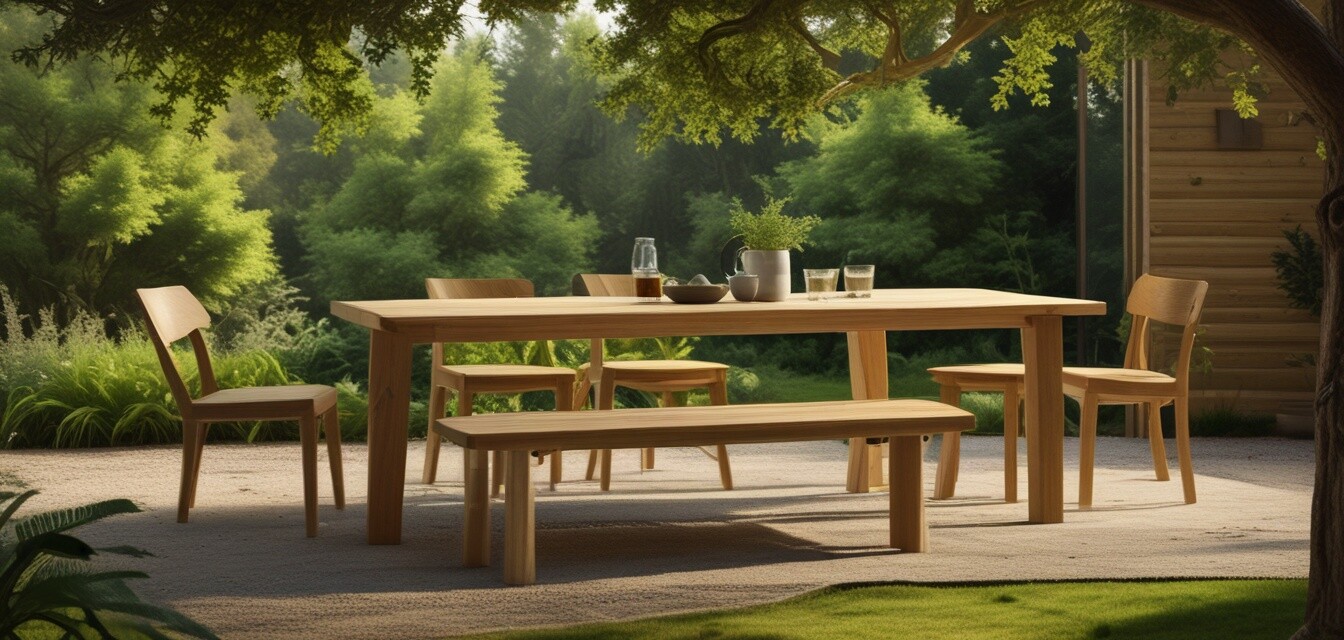
The Future of Solid Oak Furniture in Sustainable Living
- Solid oak furniture is becoming increasingly popular in sustainable living.
- Consumers are favoring eco-conscious design choices, influencing furniture trends.
- Innovations in crafting techniques are promoting sustainability within the industry.
- Global influences are shaping future designs in solid oak furniture.
As consumers and designers alike become more aware of our environmental impact, the furniture industry is responding with a push towards sustainability. Solid oak furniture, renowned for its durability and timeless beauty, stands at the forefront of this movement. This article explores how solid oak furniture will play a pivotal role in sustainable living and how it merges traditional craftsmanship with modern eco-friendly practices.
Why Solid Oak?
Solid oak has long been cherished for its incredible strength and elegant appearance. Here are some key reasons why it is a preferred choice for furniture that aligns with sustainable living:
- Durability: Solid oak can last for generations, reducing the need for replacements and thereby lessening waste.
- Natural Beauty: Oak's unique grain patterns add warmth and character to any space.
- Renewable Resource: With proper management, oak trees can be sustainably harvested, making it an eco-friendly option.
Sustainable Practices in Furniture Making
With the increase in demand for eco-conscious furniture, manufacturers have started to adopt various sustainable practices:
| Sustainable Practice | Description |
|---|---|
| Reclaimed Wood | Using wood reclaimed from old structures to create new furniture, reducing deforestation. |
| Eco-Friendly Finishes | Utilizing natural oils and water-based finishes instead of toxic chemicals. |
| Sustainable Sourcing | Choosing oak from certified forests that practice responsible forestry management. |
| Locally Sourced Materials | Reducing carbon emissions by sourcing wood locally and minimizing transportation. |
Trends Shaping Solid Oak Furniture
As we move towards a more sustainable future, several trends are emerging in the solid oak furniture market:
- Minimalist Design: A straightforward aesthetic that emphasizes functionality while highlighting the beauty of the wood grain.
- Modular Furniture: Pieces that can be rearranged or expanded to fit various needs, promoting longevity and adaptability.
- Hybrid Materials: Combining solid oak with recycled or eco-friendly materials to enhance sustainability.
- Customizable Options: Allowing consumers to personalize their furniture, leading to a deeper connection and value perception.
Global Influences on Design
Cultural influences play a crucial role in shaping today's solid oak designs:
- Scandinavian Design: Known for its simplicity, functionality, and use of natural materials, influencing global trends.
- Japanese Aesthetics: Emphasis on craftsmanship and naturalistic styles enhance the appreciation for oak's organic beauty.
- Industrial Elements: The combination of solid oak with metal frames or accents creates a unique contrast that appeals to contemporary tastes.
The Role of Consumers in Sustainable Living
Ultimately, consumers have the power to drive the shift towards sustainability:
- Making informed choices about furniture purchases can encourage manufacturers to adopt sustainable practices.
- Advocating for responsible sourcing and ethical practices can help shape industry standards.
Key Considerations for Future Purchases
As you look to furnish your home in a sustainable manner, consider the following:
Beginner's Tips
- Research brands for their commitment to sustainability.
- Look for certifications like FSC (Forest Stewardship Council).
- Invest in timeless designs that won't go out of style quickly.
- Prioritize quality over quantity; it's better to have fewer well-made pieces.
Conclusion
The future of solid oak furniture is bright, as it aligns beautifully with sustainable living trends. As awareness of eco-conscious design grows, solid oak is poised to not just survive but thrive in this new environment. By choosing solid oak, consumers are making a statement for sustainable living while enjoying the timeless beauty and durability of this classic material.
Pros
- Long-lasting and durable
- Natural and attractive grain patterns
- Eco-friendly when sourced sustainably
Cons
- Higher initial cost compared to particleboard alternatives
- Can be heavy and difficult to move
To explore more about buying solid oak furniture or check the latest news and trends in the industry, feel free to browse our blog sections.